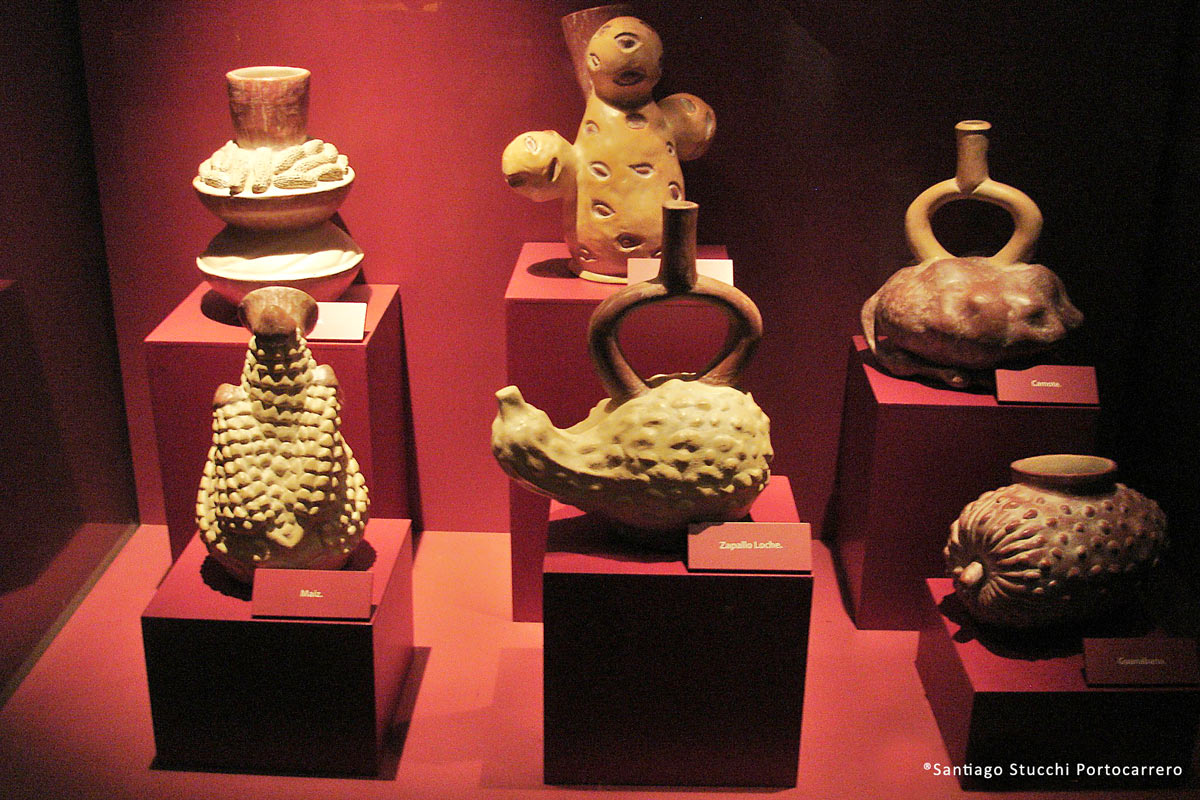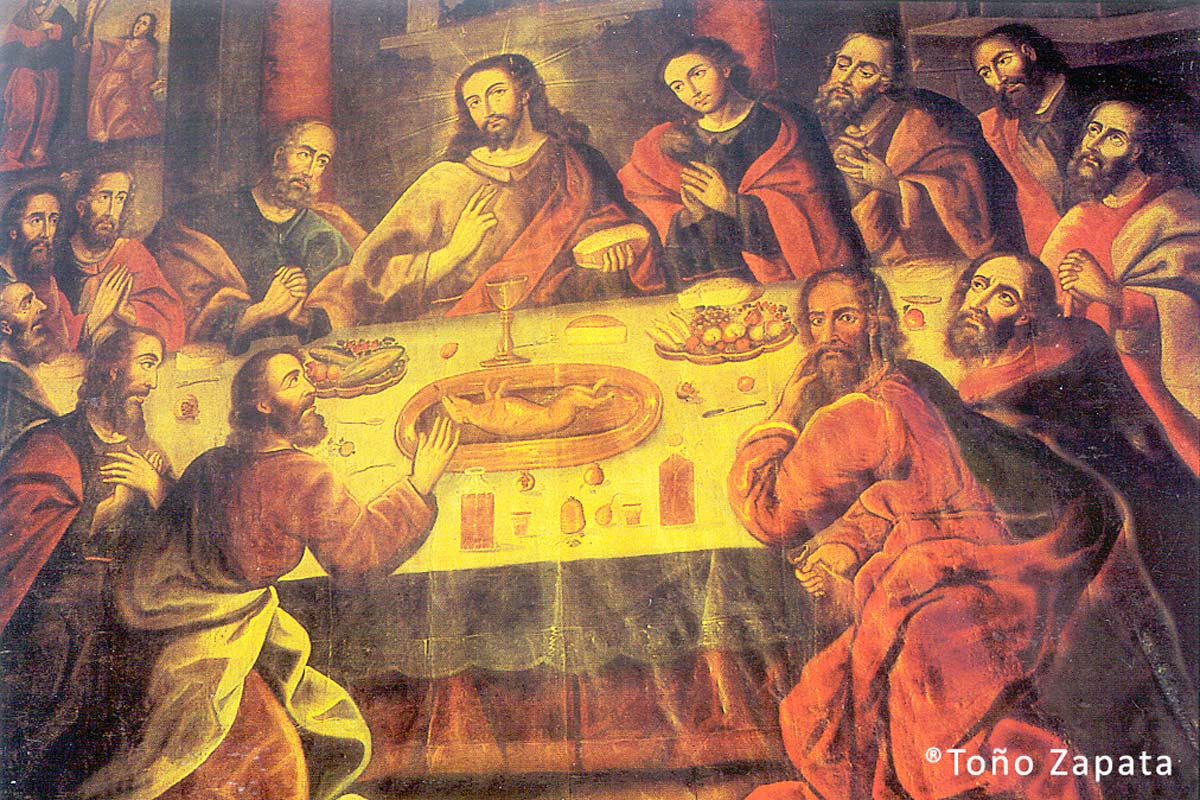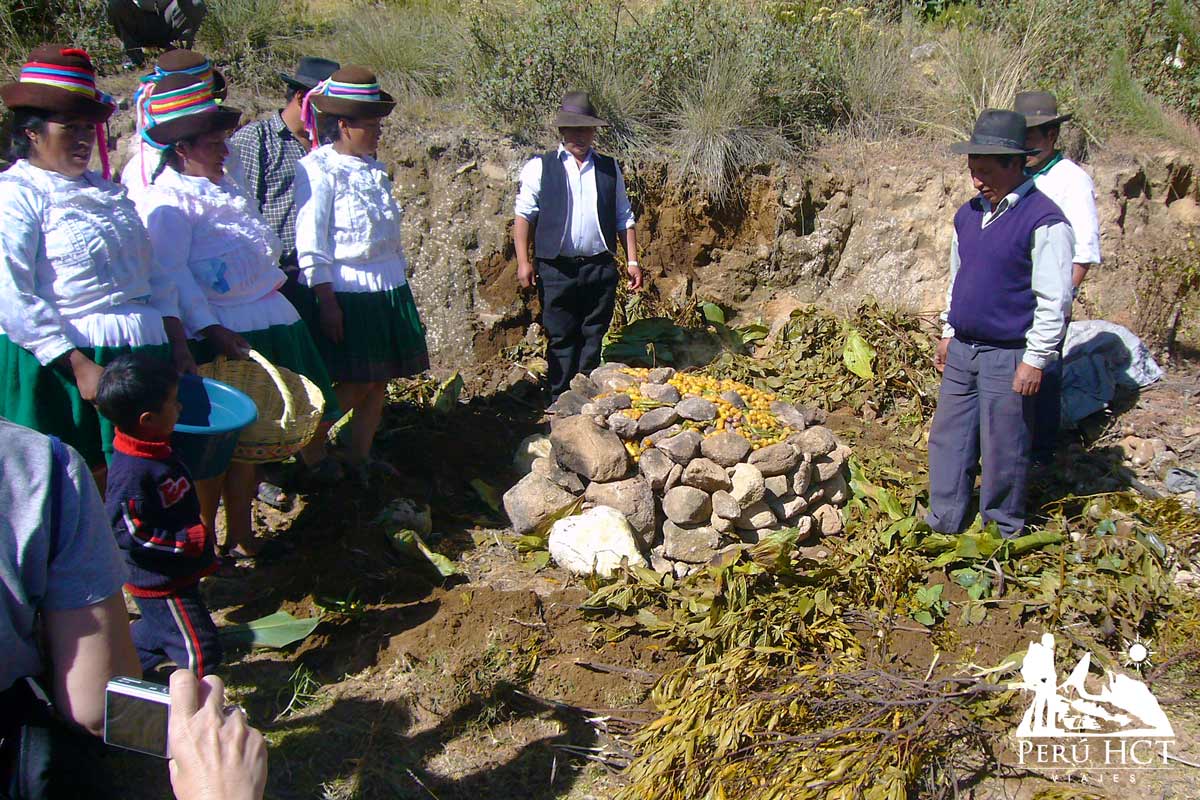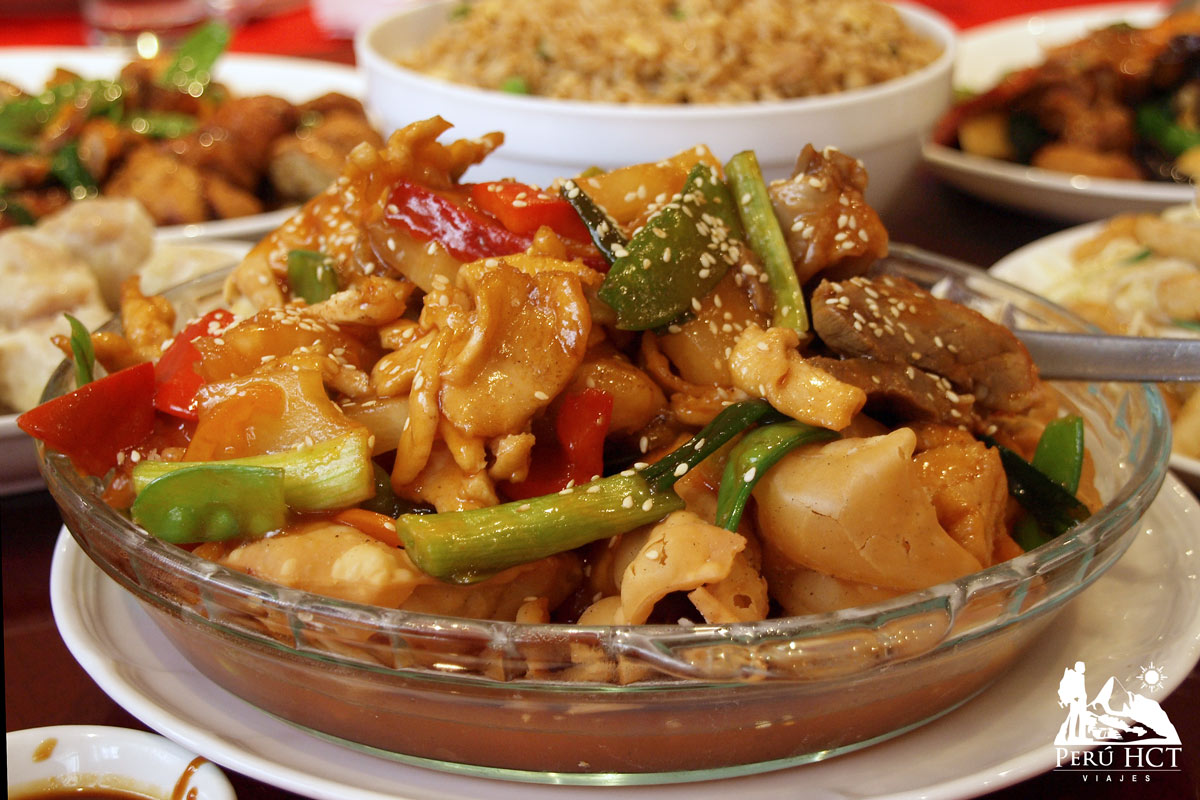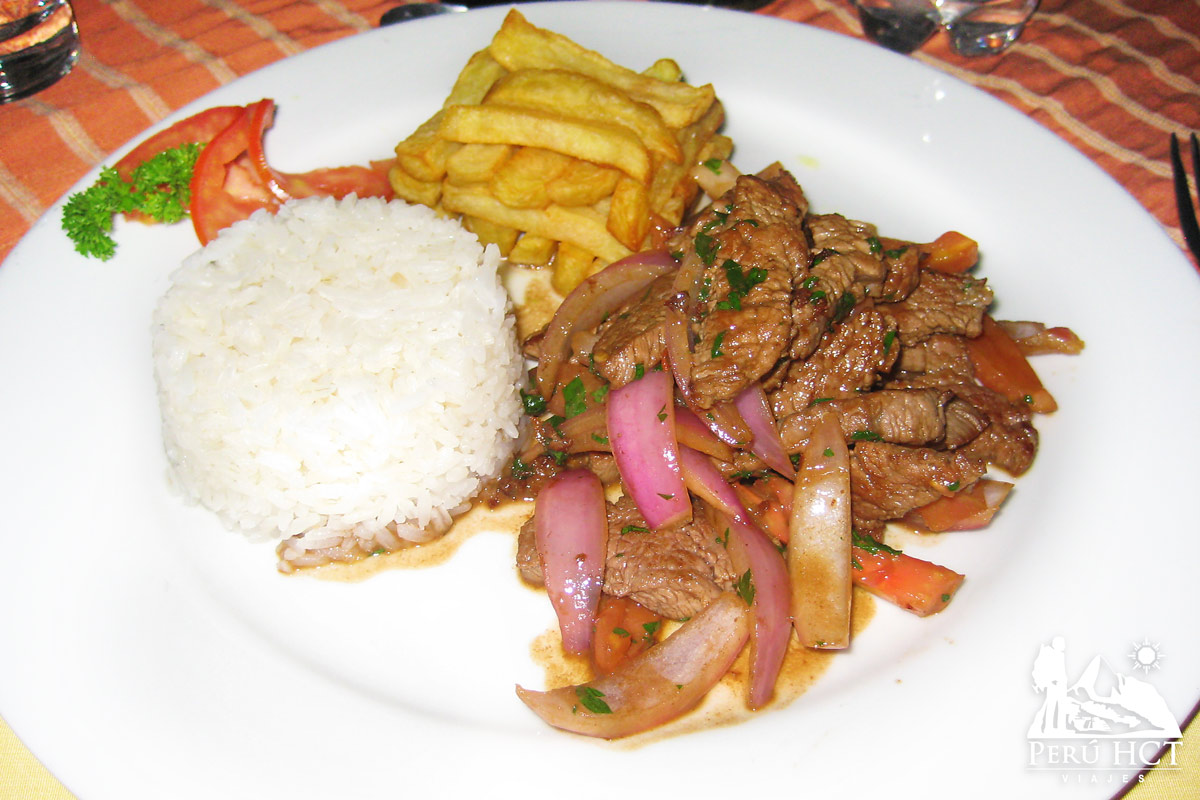Peruvian Flavors
• • •
Thousands of years ago, the man in his primitive curiosity discovers the amazing power of stealing his light and heat from the sun, discovers the fire. Over time, the control of this element allows man to illuminate the night, drive away predators and, most importantly, cook their food. Since man begins to cook he increases his power of reason and evolution; the fire softens the meat and allows a better assimilation of proteins and calories. Soon meat meets vegetables, heat is transmitted to stones and metals, water begins to boil and extract the flavor of ingredients, techniques are born, flavors are born, gastronomy is born.
The cultures that inhabited ancient Peru found a balance between nature and human beings, living in harmony with the elements provided by Mother Earth. This is how they discover the flavors and properties of fruits such as cherimoya, tuna, peanuts; vegetables such as potatoes, sweet potatoes, corn, cassava, squash; the flesh of fish, alpacas, llamas, deer and more. The relationship between food and the development of life began to be sacralized. That is why, currently, visiting a museum in Peru you can see prehispanic vessels with forms of cherimoyas, corn, cucumbers, caiguas, yuccas, pumpkins, sweet potatoes, fish, crabs, octopus, wild ducks, alpacas and others. We can also take as an example the amazing gold and silver necklaces with peanut-shaped links, found in the royal tombs of Sipan, in northern Peru. Without leaving aside, the food offerings found in different pre-Hispanic tombs.
The evolution of food was gestating as some cultures absorbed others, as the influences and techniques passed, along with other knowledge, to the dominant cultures, as was the culture of the Inca Empire. The Incas extended in great part of South America, and although everything was directed from Cusco, in the highlands of the sierra, the Inca could consume fish and fruits from the coast, due to the perfection of the Inca Roads, where Chasquis (messengers) ran at full speed with imperial orders.
At the beginning of the 16th century, the Spanish colonists arrived in Peru, who after a period of conquest managed to defeat and control the Inca Empire, absorbing their techniques and knowledge. Thus, a new fusion is born, between the Spanish culture and the Inca culture. In adhesion, we must also consider that Spanish culture was also influenced by Arab cultures, which made fusion more interesting. As part of the colonization, the Spaniards began to introduce animals such as horses, cows, pigs and more. And although the cattle suffered to adapt to the steep Inca roads, with which the llamas and alpacas had no problems, they ended up establishing themselves as the basis of colonial gastronomy, together with the pig of Iberian descent. An interesting example of the fusion of cultures is the painting by Marcos Zapata, located in the cathedral of Cusco, made in the mid-eighteenth century. In this painting you can see the Renaissance influence brought by the Europeans, but with indigenous details deeply rooted in the Peruvians. If we see well, the reason is the last supper of Jesus with his disciples, where the characteristic detail is that they are consuming a delicious Cuy as a central dish.
The mixture of elements and cooking techniques ended up being complemented, giving rise to dishes such as the current Pachamanca, where the technique of pre-Hispanic cooking is combined with the meats consumed by the Spanish, such as beef and pork. This consists of putting together a kind of stone kiln, just stacking one on top of the other and leaving a space in the center to enter the wood that will heat the stones; once the stones are hot, the tower collapses and a base is formed; meat marinated with Andean herbs, together with vegetables, are placed on hot stones; on the meat and vegetables are placed plants that function as a separator (today replaced by blankets); On this separating layer large amounts of earth are added and it is covered again with more plants or blankets. This preparation gives the meat and vegetables an exquisite natural flavor, an unmistakable aroma. Pachamanca is not only important for its flavor, but for the meaning behind it, because the harvested fruits of the earth are cooked in the same earth; This is a very nice analogy that pays tribute to the mother earth that feeds us, the Pachamama (Pacha = Earth, Mama = Mother) for the Incas. In addition, the preparation of the Pachamanca requires friendship, union, teamwork, while one group arms the furnace, another marine meat, another brings the earth, another separates the vegetables, it is a collaborative process. While the food is cooking, everyone rests and converses in communion, dipping the word with a refreshing glass of chicha de jora (ancestral drink of fermented corn). A dish that reflects the mixture of Peruvian flavors, tradition and history.
At the end of the colonial period, Peruvian gastronomy began to absorb influences from other parts of the world. The hard period of slavery brought african techniques and customs to Peruvian lands, resulting in the “anticucho”, for example, a dish prepared from a heart of beef marinated and cooked over coals. It is said that the spanish colonist patrons fed the slaves with the viscera of beef, who turned the cow heart into a delicious dish.
Later on, almost at the beginning of the republican era, large groups of Chinese began to arrive in the country to work in the latifundia of Peru. The treatment they receive is not very different from that of African slaves, as they were also victims of employer abuse. However, the Chinese who won their freedom, escaping the unfair labor contracts, began to merge with society, opening businesses selling items and food. Over time, Chinese products were being planted on Peruvian soil, popularizing native Chinese preparations. This is how the Chinese-Cantonese-Peruvian fusion that we know today as “Chifa” was born. This delicious cuisine maintains the bases of Chinese cuisine and adds elements of Peruvian cuisine. Today you can try a “Ti Pa Kuy”, crispy fried guinea pig meat and bathed in sweet tamarind sauce. The places known as Chifas are the most popular in Peru, they are found in many places in the city and in most cities in the country.
Asian migrations also brought flavors from Japan to Peru. Although the story was not very different from that of its Chinese counterparts, in terms of the difficulty to survive, once the Japanese flavors were established, they merged with the Peruvians, creating the Peruvian Nikkei food. The Japanese preparation techniques found in the ceviche the harmony between its gastronomy and the Peruvian one; as well as they brought to the world the delicious “Tiradito”, where thin strips of fish find their tasty destiny when being bathed in Peruvian lemon or yellow pepper; and continuing with the fusion, today they can be found in olive sauce, four cheeses, aguaymanto, passion fruit and more. Also coming from this fusion are the famous Sushi Makis, in all their styles, such us acevichados, a la brasa, with Lomo Saltado and more.
As results of different influences, some of great influence as the Chinese, others smaller than the one brought by the French, Germans or Italians who escaped the war, Peruvian gastronomy laid its foundations in the varied and interesting of its history. Different dishes were considered within the well-known “Criolla” cuisine of Peru. These dishes, although they contain influences and histories of specific cultures, were reborn under Creole food and shine with the Peruvian flag. Inside the Creole kitchen we can find the Arroz con Pollo, Ají de Gallina, Ceviche, papa a la Huancaína, Mazamorra Morada, Picarones, Lomo Saltado, Suspiro a la Limeña, Carapulcra, Olluquito con charqui, Pisco Sour and more.
Currently Peruvian cuisine is in full swing, different chefs are looking to innovate in the preparation of traditional dishes, combining modern techniques or other cuisines of the world. So now we can find the current “Novoandina”, a type of cuisine that seeks to value Andean ingredients that until today were not being used. From this fusion we can find, for example, Creps de Quinua and aguaymanto, Cuy in oyster sauce, Lasagna of alpaca, Risotto of Quinua al Ají and more.
The flavor of the first meat that touched the fire thousands of years ago has transcended in time, adding to different flavors, techniques, ingredients, traditions, stages of pain and glory, ingenuity, entrepreneurship, harmony… history. When you try a Peruvian dish, you are really savouring the history, culture and tradition of a country that never ceases to amaze the world.
I hope this entry is helpful, if you have any questions or comments, you can write us by message to our Facebook. Enjoy your meal!!
Sebastian G. – Perú HCT Viajes




